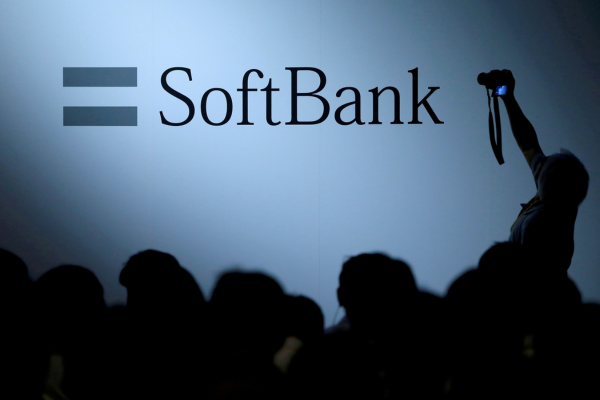Building consumer trust around sustainability

George Curtis at the Carbon Neutral Group shares his insight into how businesses can build credibility when it comes to sustainability
In the past 24 months, there has been a significant shift in how consumers and businesses approach sustainability. The silver bullet of Carbon Offsetting is now recognised as part of the process and not the end goal.
With brands being damaged by trying to ‘solve sustainability’ or claims around sustainability that are not warranted, businesses must rethink not just their strategy but their overarching relationship with it. The buzzwords have faded, and people now want facts.
Start with a credible, achievable message
If a business is approaching sustainability for the first time, the first rule to follow to build credibility is creating a sustainability message that they can stand by.
This is easier said than done as it requires engagement from several departments or stakeholders within the business, internal education, and agreement of goals to generate a message that is achievable. This message about the company’s stance needs to be transparent and attainable to avoid greenwashing.
Clear objectives will not only engage stakeholders within the business and contribute to a culture shift, but also customers. If external parties understand a business’ sustainability goals, they will be more likely to continue supporting that business. For example, changing an electricity provider can be a good start, but it is also important to consider how this can be marketed.
Set measurable goals with a timeline
Setting measurable goals is a key part of building credibility around sustainability. For example, consider what action has been taken so far, what the goals are for the next few years, and what date is realistic to achieve Carbon Neutral status, followed by Net Zero. Ideally, this goal needs to be sooner than 2045 and actionable steps are needed to demonstrate how this will be achieved.
This should include successes where these steps have been successfully achieved, but also challenges with explanation as to how the business overcame them. For example, if your business has a high dependency on travel, hotel stays and the associated emissions, consider making a clear statement about this, the proposed changes for travel, and what the plans are to meet sustainability goals while still prioritising customers and clients.
With the challenge of a high amount of business travel, companies may consider adopting a departmental carbon budget. This means that if travel is essential, there is both a financial and carbon budget that employees will need to adhere to. If this is exceeded, then a fine is incurred where they need to plant a tree or look to offset those emissions.
Being transparent about these challenges is important as other businesses can relate and may be inspired by your own efforts. Communicating how your business is approaching sustainability, and what the issues are will help others to learn and improve their own sustainability strategy. A success story is less likely to receive attention and may be labelled as greenwashing by third parties if tangible evidence cannot be provided.
Sustainability Is a journey, not a quick fix
Setting clear goals and accurately measuring your footprint across a range of areas is a crucial part of successfully navigating the journey to become a more sustainable business. Businesses which invest in the minimum changes but make strong claims about their efforts will cause customers and employees to disengage and lose trust.
Sustainability is a journey, and you need to approach it as one. Rome wasn’t built in a day and businesses need to have the same mindset. Consider both short- and long-term goals and track the changes and subsequent impacts accordingly.
For example, when it comes to Scope 1 (direct emissions from sources controlled by the company) and 2 emissions (indirect emissions from factors such as the electricity used in an office), changes can be made in the short term. Scope 3 (all indirect emissions that occur in a company’s value chain) requires longer term investment, engagement and behaviour change.
Engage employees and align leadership
Engagement with your team is key. Conduct employee surveys around sustainability to discover the level of importance to the team, drive educational programmes and talk about why the business is undertaking these changes. Ensure a top-down approach is deployed, to demonstrate that every member of the business is invested in achieving these goals. For example, make sure the message from the CEO to the workforce is clear.
Any claims that are being made about change need to be backed with action. We have already seen businesses incorporating sustainability into next year’s overarching business strategy, and this is only set to continue. By doing this, both internal and public declarations, along with talking through any challenges so the journey is clear, will build credibility with industry peers and customers.
Make bold supply chain decisions
Leading with action can be daunting, especially if your business is ahead of the curve when it comes to investing in sustainability initiatives. Make difficult decisions and talk about why these are happening, for example reviewing the supply chain, or moving from a key supplier that everyone knows to a smaller business, a greener business or one that is local.
With your business being responsible for supply chain emissions, removing a company from the supply chain can signify that your intentions are genuine, and this isn’t a fad, but a new start for your business. Making bold supply chain decisions will communicate the message that if suppliers want to work with you, they too need to invest in their sustainability agenda.
When reviewing the supply chain, ensure each supplier has a green agenda, sustainability plan and is ready to make a green commitment to effectively demonstrate that sustainability is a priority and aligns with your own objectives.
Consistency, authenticity and patience
Any organisation hoping to build trust around sustainability must follow three key principles:
- Consistency: Make sustainability a regular part of your internal and external content schedule to effectively engage with your target audience. Ensure that any messages communicated can be backed up by actionable evidence and insights.
- Transparency and truth: Showcase the reality of the journey, including the good and the bad. This will more effectively demonstrate a commitment to sustainability and appear more authentic to peers and customers.
- Patience: Any changes made won’t necessarily have the impact you want overnight, but with time and consistent messaging more people will look up to and believe your efforts.
George Curtis is Director at sustainability consultancy Carbon Neutral Group,
Main image courtesy of iStockPhoto.com and Franco Tognarini

Business Reporter Team
Related Articles
Most Viewed
Winston House, 3rd Floor, Units 306-309, 2-4 Dollis Park, London, N3 1HF
23-29 Hendon Lane, London, N3 1RT
020 8349 4363
© 2025, Lyonsdown Limited. Business Reporter® is a registered trademark of Lyonsdown Ltd. VAT registration number: 830519543




